
Mushrooms add a unique taste and texture to a salad, sauce or other dish. Pennsylvania, which hosts an annual mushroom festival in Kennett Square and is home to multiple mushroom clubs, offers a wide variety of wild mushrooms. However, not all mushrooms are edible. Learning about mushrooms helps you distinguish between edible and poisonous mushrooms and choose the appropriate mushroom for a dish.
Edible Gilled Mushrooms
Gilled mushrooms have gills, or small blades, underneath the cap. Wine cap mushrooms, one of a few types of gilled mushrooms in Pennsylvania, have a burgundy color and may grow up to 15 inches in diameter. These mushrooms thrive in wood mulch and grow in large clusters. Glistening inky cap mushrooms begin to appear in early spring. These mushrooms typically grow during wet weather and may be found in rotting wood or a tree stump. The cap of an glistening inky cap mushroom only grows to around 2 inches in diameter and the mushrooms have a short lifespan, so they must be picked and cooked shortly after appearing. Common psathyrella mushrooms grow in lawns and rotting wood after a warm rain. This kind of mushroom tends to be cone-shaped with a whitish color, but may be difficult to identify because of a wide variety of copycat mushrooms.
Edible Pored Mushrooms
Pored mushrooms have spores instead of gills, giving them a sponge-like appearance under the cap. One of these varieties, white chicken mushrooms, taste like chicken as the name suggests. These mushrooms have a salmon-colored cap with a white underside and typically grow in stacks. White chicken mushrooms grow on stumps or logs. The dryad saddle mushrooms, also known as pheasant wings, are a type of morel mushroom, which means they have a honeycomb-like shape. To some, these mushrooms have a strong odor, but they are safe to eat. Dryad saddle mushrooms grow on maple, elm, poplar and other Pennsylvania trees.
Poisonous Mushrooms
Scaly inky cap mushrooms have a strong odor and gray coloring. These mushrooms grow on rotting wood. According to the "Field Guide to Wild Mushrooms of Pennsylvania and the Mid-Atlantic," while some seasoned mushroom hunters eat them, scaly inky cap mushrooms, especially those with a stronger odor, have been known to cause stomach problems. Jack-O-Lantern mushrooms have a bright orange color, glow in the dark, and cause stomach problems when eaten. Amanita mushrooms appear to be copies of many edible mushrooms, but may contain the poison amanitin, which has the ability to kill a person. The mushroom has a parasol shape and a cup surrounding the bottom of the stem. Galerinas are large mushrooms with brown spores and also contain amanitin.
Picking Mushrooms
Have a field guide on hand when picking mushrooms. Many edible mushrooms have copycat versions that are poisonous and a field guide will provide you with the specific characteristics of each edible mushroom type and detailed pictures. Picking a mushroom and eating it without identifying it first increases the chances that you will consume a poisonous mushroom. While most poisonous mushrooms will not kill you, they may lead to uncomfortable gastrointestinal problems. Additionally, if caught picking certain types of mushrooms, including "magic" or psilocybin mushrooms, you may end up in jail because picking and consuming these types of mushrooms is illegal in Pennsylvania.
Related Articles

How to Cook Chanterelle Mushrooms
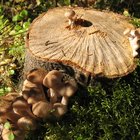
Mushrooms Found in Northern Michigan
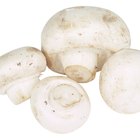
Portobello Mushroom Vs. Button Mushroom
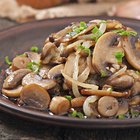
How to Grill Mushrooms on the Stove
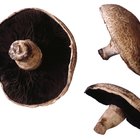
How to Grill Portabella in the Oven

How to Tell When Fresh Mushrooms Go Bad
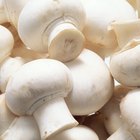
Can I Cook With Mushrooms That Have ...
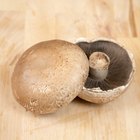
How to BBQ Portobello Mushrooms

How to Cook Dry Chanterelles
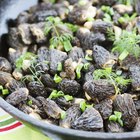
How to Bake Morel Mushrooms

How to Cook Mushrooms as Hamburger Buns
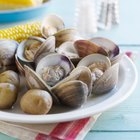
Types of Edible Clams

How to Cook Maitake

How to Make Stuffed Mushroom Caps
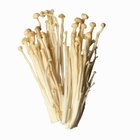
How to Grow Enokitake

How to Freeze Ramps & Wild Leeks

How to Soften Mushrooms

How to Tell If My Tomatillos Are Ripe

How to Cook Sheephead Mushrooms

How to Cook Mini Bella Mushrooms
References
- "Field Guide to Wild Mushrooms of Pennsylvania and the Mid-Atlantic"; Bill Russell; 2006
Resources
Writer Bio
Stacy Zeiger began writing in 2000 for "Suburban News Publication" in Ohio and has expanded to teaching writing as an eighth grade English teacher. Zeiger completed creative writing course work at Miami University and holds a B.A. in English and a M.Ed. in secondary education from Ohio State.
Photo Credits
Jupiterimages/liquidlibrary/Getty Images